I love gardening. From a very young age, I watch very closely how my parents work around the coffee plantation. In between the coffee trees, my Dad would grow corn and various type of veggies. He also harvest a lot of edible weeds and mushrooms. The meals tasted so good when everything was so fresh. Some of my favorite memories were my Dad brought home some bamboo shoots or mushroom the day after a big rain.
I remember rampaging the coffee farm, trying to look for the plant. Once I find some, I’d make some jello. It’s really simple. Use a wooden or stone mortar and pestle to crush the leaves, the root and the body of the vine. Then pour water over it, using a cloth to collect the leaves. Set it for a couple of hour. Voila! You get the jello. Just put a teaspoon of sugar over it. It was the greatest snack ever. Who need cooking class? ehhehe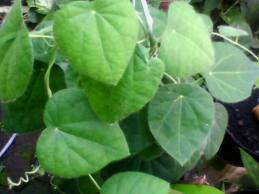
First, I’d like to clarify, I’m not super frugal or cheap. I forage because I love to forage and the plants taste great to me. Foraging brings a lot of joy to my life. Happiness is simple.
Second, many of these garden weeds are like household vegetables to me, I eat them many times growing up. So, it’s natural for me to continue to eat them. My general diet always include some vegetables. Green leafy vegetable and rice to me is like bread and butter for you, I can’t live without either one. 🙂
Third, one of my side hustle is to sell some of my veggies from my garden the local market. Gardening is joyful and relaxing to me. And I can earn $10-$15 each time.
This week, I’ve decided to forage some of the garden weeds in my 1/2 acre yard. I harvested (try to take out the weed is more like it :)) about 3 big bundles of dandelion and it was delicious. Instead of throwing them away, I thought I’d share some of the edible garden weeds to everyone. There is a saying right “when life throw you a lemon, you make lemonade”. The plants are edible, so why not?
Making sure the plants are not intermingle with the grass that has been sprayed with poisonous chemicals. And like anything else, you need to identify it 3 times from different picture source making sure you’re eating the right thing.
1. Dandelion
The leaves can also be steamed or added to a stir-fry or soup, which can make them taste less bitter. The flowers are sweet and crunchy, and can be eaten raw, or breaded and fried, or even used to make dandelion wine. The root of the dandelion can be dried and roasted and used as a coffee substitute, or added to any recipe that calls for root vegetables.
I personally harvest dandelion and sauteed it in garlic, with salt and pepper. Aside from being a little bit bitter like bitter melon, it tasted great. Love it!
2. Purslane
It is a nutritional powerhouse, as it is said to contain more omega-3 fatty acids than any other leafy vegetable, and can be a great addition to a salad or stir-fry, or used to thicken soups or stews.

I knew a Thaidam family, the live near the river, whenever they go for a walk, they forage some of the vegetable home. They’d steam it with a bunch of other veggies. It tastes like any other vegetables to me, bland and I dipped it in some hot soy sauce, and yum!!!
3. Clover
Small amounts of raw clover leaves can be chopped into salads, or can be sauteed and added to dishes for a green accent, and the flowers of both red and white clover can be eaten raw or cooked, or dried for tea.
I’ve never eaten clover before. It comes in pinkish and purple.
4. Lamb’s Quarters
The young shoots and leaves of Lamb’s Quarters (also known as goosefoot) can be eaten raw in any vegetable dish, or sauteed or steamed and used anywhere spinach is called for. The seeds of the Lamb’s Quarters, which resemble quinoa, can also be harvested and eaten, although it takes a lot of patience to gather enough to make it worthwhile.
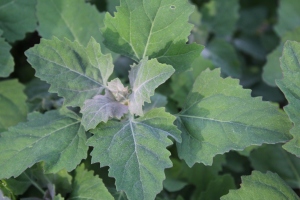
I found a lot of them last summer. Since I didn’t know what they were, I pulled them and I haven’t seen any in my garden bed this summer. They generally come in the summer anyways. I will try to see what they’d taste like.
5. Plantain
Not only a great medicinal plant that can be used topically to soothe burns, stings, rashes, and wounds, but is also a great edible green for the table. The young leaves of plantain can be eaten raw, steamed, boiled, or sauteed, and while the older leaves can be a bit tough, they can also be cooked and eaten as well. The seeds of the plantain, which are produced on a distinctive flower spike, can be cooked like a grain or ground into a flour, and are related to the more well-known psyllium seeds, which are sold as a fiber supplement and natural laxative.
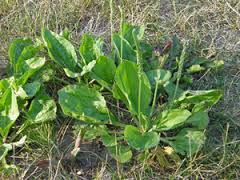
I have a lot of this somehow this year. I’ll try to collect the young ones. I’ll let you know how it taste on the next update. 🙂
6. Chickweed
This rather unassuming garden weed can be harvested and used for both food and medicine. Chickweed leaves, stems, and flowers can all be eaten either raw or cooked, where it adds a delicate spinach-like taste to any dish. The plant can also be used as a topical poultice for minor cuts, burns, or rashes, and can be made into a tea for use as a mild diuretic.
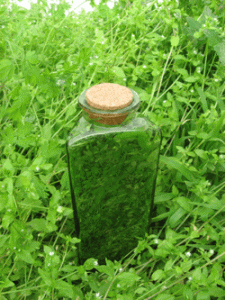
I have not found any in my garden. I’ll look for it near the river trail on my next hike.
7. Mallow
Mallow, or malva, is also known as cheeseweed, due to the shape of its seed pods, and can be found in many lawns or garden beds across the US. The leaves and the seed pods (also called the ‘fruit’) are both edible, either raw or cooked, and like many greens, are often more tender and palatable when smaller and less mature. The older leaves can be used like any other cooked green after steaming, boiling, or sauteeing them.
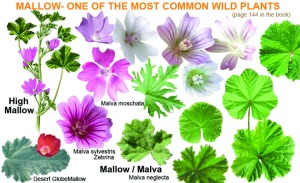
I haven’t eaten any mallow yet. I’ll have to do a bit more research before trying this one.
8. Wild Amaranth
The leaves of the wild amaranth, also known as pigweed, are another great addition to any dish that calls for leafy greens, and while the younger leaves are softer and tastier, the older leaves can also be cooked like spinach. The seeds of the wild amaranth can be gathered and cooked just like store-bought amaranth, either as a cooked whole grain or as a ground meal, and while it does take a bit of time to gather enough to add to a meal, they can be a a good source of free protein.
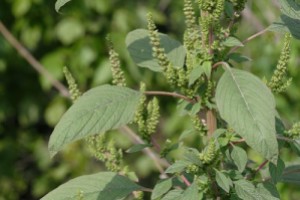
I’ve eaten pigweed many times growing up. You can also find this in many Asian grocery store. It is super good, I like to make soup or sautee it in garlic also.
9. Curly Dock
Curly dock (also called yellow dock) leaves can be eaten raw when young, or cooked when older, and added to salads or soups. The stems of the dock plant can be peeled and eaten either cooked or raw, and the mature seeds can be boiled, or eaten raw, or roasted to make a coffee substitute. Dock leaves are rather tart, and because of their high oxalic acid content. It’s often recommended to only eat them in moderation, as well as to change the water several times during cooking.
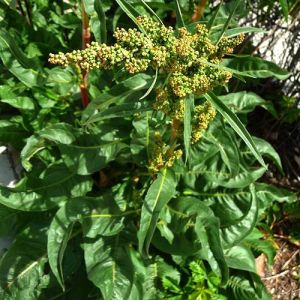
I have not tried curly dock yet. But having seeing the recommendation to change water several times meaning it might have some properties that isn’t totally safe to eat.
10. Pepper leaves
Most people just wait for the “fruits” – the hot chilly pepper or the green pepper. But they didn’t know we can also eat the leaves.
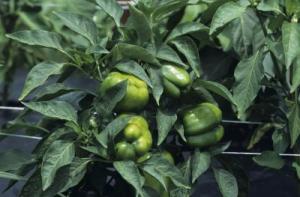
It does have a bland taste like spinach.
11. Pumpkin family leaves
The key is to only eat the young tips and the male flowers. Also we need to get rid of the many needle and the furry hairs on the leaves before able to consume.
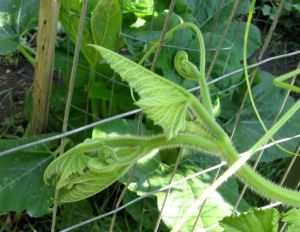
I won’t eat the antennas (the spiral shoot that come out to help the pumpkin attach to things). That part could be bitter. The rest can have a bit of a sweet taste to it.
12. Palm Heart/Coconut Heart
If you watch some survival shows, you can see some of the survivalists do eat the palm hearts. I live in north America, so unfortunately, I don’t get any.
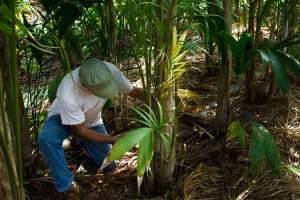
I tried it a couple times, depend on what you get, but it can range from bland to sweet.
13. Water Spinach
Swamps areas in Florida and surrounding States are infested with water spinach from Asian immigrants who import the seeds. You can make many dishes with it from soup to sautee to eating raw.
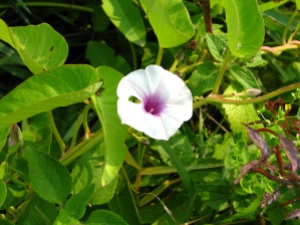
I eat water spinach many times. Love it. I could have water spinach 4 days straight without getting sick of it.

I like to forage in video games in order to gather ingredients to make potions and antidotes but haven’t tried it in real life yet. It sounds fun though. I just didn’t know much about what plants are edible. But I know where to start now thanks to this post. We have lots of dandelions in Canada and they’re easy to identify. I’m going to pick some and try to eat them. 🙂
Make sure you pick the young leaves only to reduce the bitterness. Or you can harvest the flower to make wine. It looks pretty simple to make only a few ingredient depending on the recipe. The flower has sweet taste to it.
Really cool list! I knew dandelions are edible, but I’m always scared to pick them in case someone sprayed weed killer on them without me knowing. Didn’t know pepper leaves were edible either. That’s also cool, considering my girlfriend and I are getting a new garden set up, and we both love peppers. Can they be eaten raw, or are they better cooked?
I don’t like smell of fresh pepper leaves, very grassy and strong. It could be mixed with other veggetabled then boil or steam. Dip in hot pepper soy sauce with rice is the best bet!! 🙂